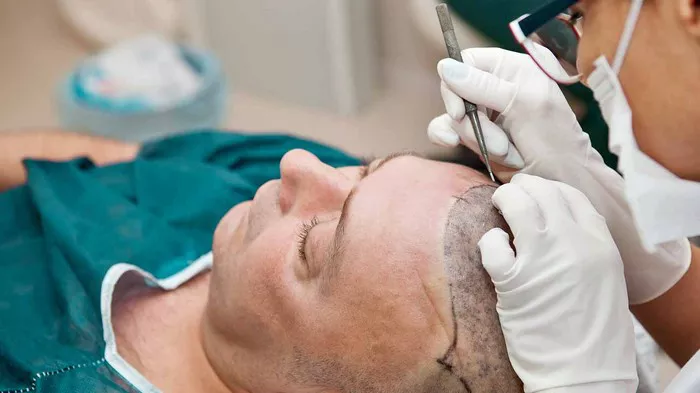In the quest for a full head of hair, many individuals turn to hair transplant procedures as an effective solution to combat hair loss. However, understanding the intricacies of hair transplantation can be a key factor in determining the success of the procedure and managing expectations. One important aspect to consider is how many hairs are typically found in a single graft during a hair transplant. In this comprehensive guide, we will explore the number of hairs in a graft, factors influencing this count, and what you can expect from your hair transplant journey.
What is a Hair Graft in Hair Transplantation?
Before we delve into the specifics of the number of hairs in a single graft, it’s essential to comprehend what a hair graft is in the context of hair transplantation. A hair graft, also known as a hair follicle unit, is the tissue that is removed from the donor area and transplanted to the recipient area during the procedure. Each graft can contain one or more hair follicles.
1. Hair Graft Types: Hair grafts are typically categorized into single follicular units (containing one hair), double follicular units (containing two hairs), or triple follicular units (containing three hairs).
2. Follicular Unit Extraction (FUE) and Follicular Unit Transplantation (FUT): The choice of graft type can vary depending on the transplantation method used. FUE and FUT differ in how grafts are extracted and transplanted, influencing the number of hairs in each graft.
See Also: Is FUT Hair Transplant Worth It: Making the Right Decision
Factors Affecting the Number of Hairs in a Graft:
The number of hairs in a graft during a hair transplant can be influenced by several key factors:
1. Donor Area Characteristics: The density and quality of hair in the donor area play a significant role in determining the number of hairs in a graft. A healthy donor area with high hair density can yield grafts with multiple hairs.
2. Transplantation Method: As previously mentioned, the choice between FUE and FUT can impact the number of hairs per graft. FUE is known for producing single-hair grafts, while FUT can yield grafts with multiple hairs.
3. Graft Preparation: During the transplantation process, grafts are dissected and prepared under microscopes. The skill and experience of the surgical team can affect the precision of graft preparation and, subsequently, the number of hairs per graft.
4. Patient-specific Factors: Individual patient characteristics, such as hair type, hair thickness, and the extent of hair loss, can also influence the number of hairs in each graft.
What to Expect in Terms of Hair Graft Counts:
When undergoing a hair transplant, it’s important to set realistic expectations regarding the number of hairs you can expect in each graft.
1. Single-Hair Grafts: FUE procedures often result in single-hair grafts. While this may seem limited, it allows for precise placement and a natural-looking hairline.
2. Multiple-Hair Grafts: FUT procedures are more likely to produce grafts with multiple hairs, which can provide increased coverage in areas of hair loss.
3. Total Hair Count: The overall number of grafts you receive during a hair transplant is a more critical factor for assessing the potential coverage and density of your new hair.
Maximizing the Outcome of Your Hair Transplant:
While you may not have control over the number of hairs in a single graft, there are steps you can take to optimize the results of your hair transplant procedure.
1. Consultation and Planning: Work closely with your hair transplant surgeon during the initial consultation to discuss your goals and develop a personalized treatment plan.
2. Choosing the Right Method: Select the transplantation method that aligns with your objectives and hair characteristics. Your surgeon can guide you in making the best choice.
3. Post-Transplant Care: Adhering to post-transplant care instructions, such as proper grooming, using recommended products, and avoiding harsh treatments, can promote healthy hair growth and graft survival.
4. Patience and Realistic Expectations: Understand that hair regrowth is a gradual process, and results may take several months to become evident. Maintaining realistic expectations is crucial for overall satisfaction.
The Impact of Multiple Sessions:
For individuals with extensive hair loss or those seeking greater hair density, multiple hair transplant sessions may be necessary. In such cases, it’s important to discuss with your surgeon the strategy for spreading out sessions and ensuring optimal graft survival.
1. Progressive Coverage: Multiple sessions can provide a staged approach to achieving desired hair density, allowing the surgeon to carefully plan each procedure and assess the outcome before proceeding to the next.
2. Minimizing Donor Depletion: By spreading sessions over time, the risk of depleting the donor area excessively is reduced, ensuring there are sufficient grafts for future needs.
Conclusion: Understanding the Number of Hairs in a Graft
In conclusion, the number of hairs in a single graft during a hair transplant can vary based on several factors, including the chosen transplantation method, donor area characteristics, and the surgeon’s expertise. Rather than focusing solely on the number of hairs in a graft, it’s crucial to consider the overall hair count and the skills of your surgical team. By setting realistic expectations, making informed choices, and following post-transplant care guidelines, you can enhance the likelihood of achieving your desired results in your hair transplant journey. Remember that patience is key, and the ultimate goal is to regain a natural-looking and confident appearance.


